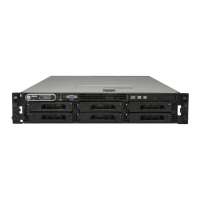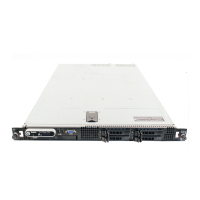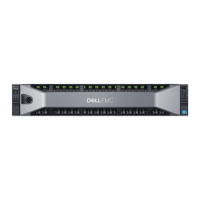4-12 Dell PowerEdge 4100/180 and 4100/200 Systems User’s Guide
Using the Password Features
Using the Supervisor Password Feature
Your Dell system is shipped with the supervisor pass-
word set to DISABLED, which allows you to enter the
System Setup program and assign a password. When the
SUPERVISOR PASSWORD IS category is set to ENABLED,
the computer system prompts you for the supervisor
password whenever you enter the System Setup program.
If system security is a concern, you should operate your
system with supervisor password protection.
You can assign a supervisor password, as described in the
next subsection, “Assigning a Supervisor Password,”
whenever you use the System Setup program. Once a
supervisor password is assigned, only those who know
the password have full use of the System Setup program.
To delete or change an existing supervisor password, you
must know the supervisor password (see “Deleting or
Changing an Existing Supervisor Password” found later
in this section).
NOTE: You can also assign, delete, or change a supervisor
password through the EISA Configuration Utility. See
“Assigning a Supervisor Password” and “Deleting or
Changing an Existing Supervisor Password” in Chap-
ter 5.
If you assign and then forget a supervisor password, a
trained service technician must open the computer and
change a jumper setting to disable the supervisor pass-
word feature (see “Disabling a Forgotten Password”
found later in this section). Note that the user password is
erased at the same time.
NOTE: The system allows you three attempts to enter a
password. After three failed attempts, the keyboard locks
up and you must reboot the system before you can try
entering a password again.
Assigning a Supervisor Password
A supervisor password can be assigned only when the
SUPERVISOR PASSWORD IS category is set to DISABLED.
Press <ENTER> to display a dialog box in which you can
enter the password. You can use up to seven alphanu-
meric characters in a password, and the password is not
case sensitive (it can be either uppercase or lowercase
characters).
NOTE: The supervisor password can be the same as the
user password. However, a user password cannot be set
until a supervisor password has been set.
After you verify the password, the SUPERVISOR PASS-
WORD IS
setting changes to ENABLED. The next time you
attempt to enter the System Setup program, the system
prompts you for the supervisor password.
Keep the following tips in mind when setting your
password:
• You can use up to seven alphanumeric characters in
your password (passwords are not case sensitive).
• As you press each character key (or the <SPACEBAR>
for a blank space), a placeholder appears in the field.
• To erase a character when entering your password,
press the <BACKSPACE> key or the left-arrow key.
NOTES: The password assignment operation recognizes
keys by their location on the keyboard, without distin-
guishing between lowercase and uppercase characters.
For example, if you have an M in your password, the system
recognizes either M or m as correct.
Certain key combinations are not valid. If you enter one
of these combinations, a beep sounds.
To exit the field without assigning a supervisor password,
press the up-arrow or down-arrow key to move the highlight
to another field, or press the <ESC> key at any time before set-
ting a new password.
Using Your Supervisor Password to
Secure Your System
Each time you turn on your system, reboot the system, or
press the reset button, the following prompt appears on
CAUTION: The password features provide a
basic level of security for the data on your system.
However, they are not foolproof. If your data
requires more security, it is your responsibility to
obtain and use additional forms of protection,
such as data encryption programs.
